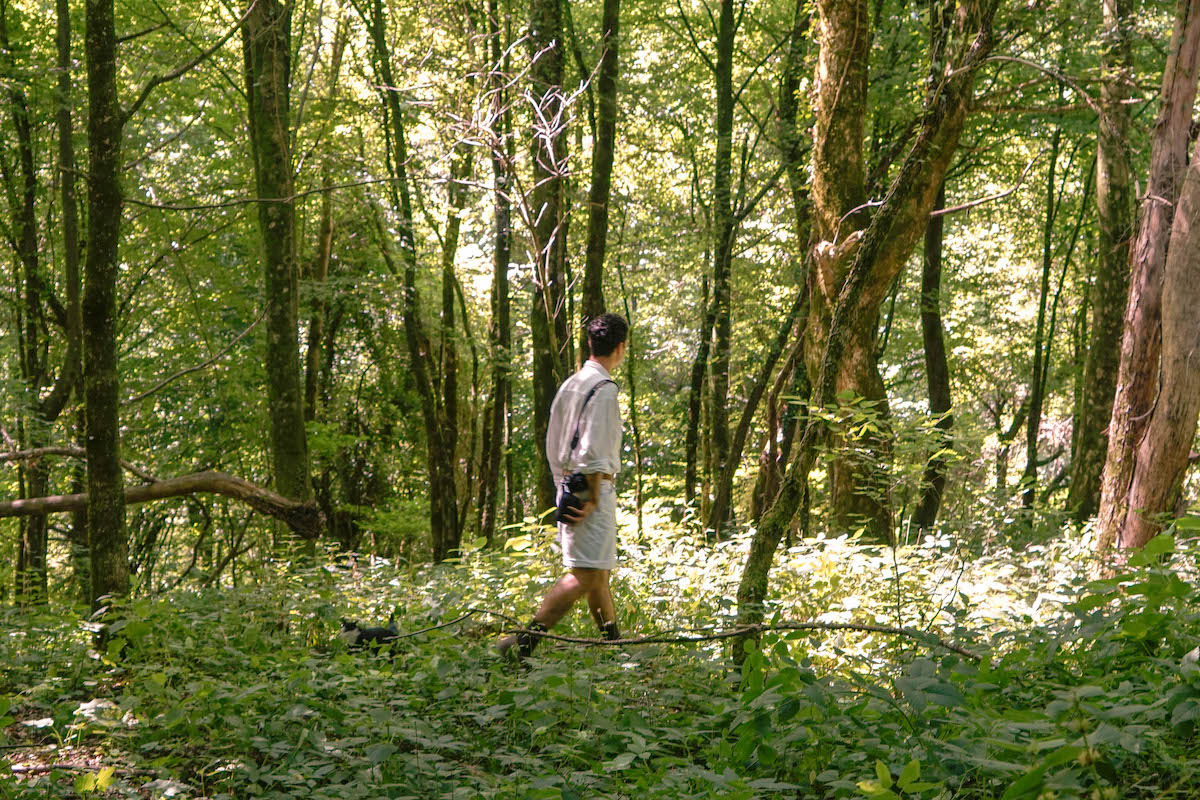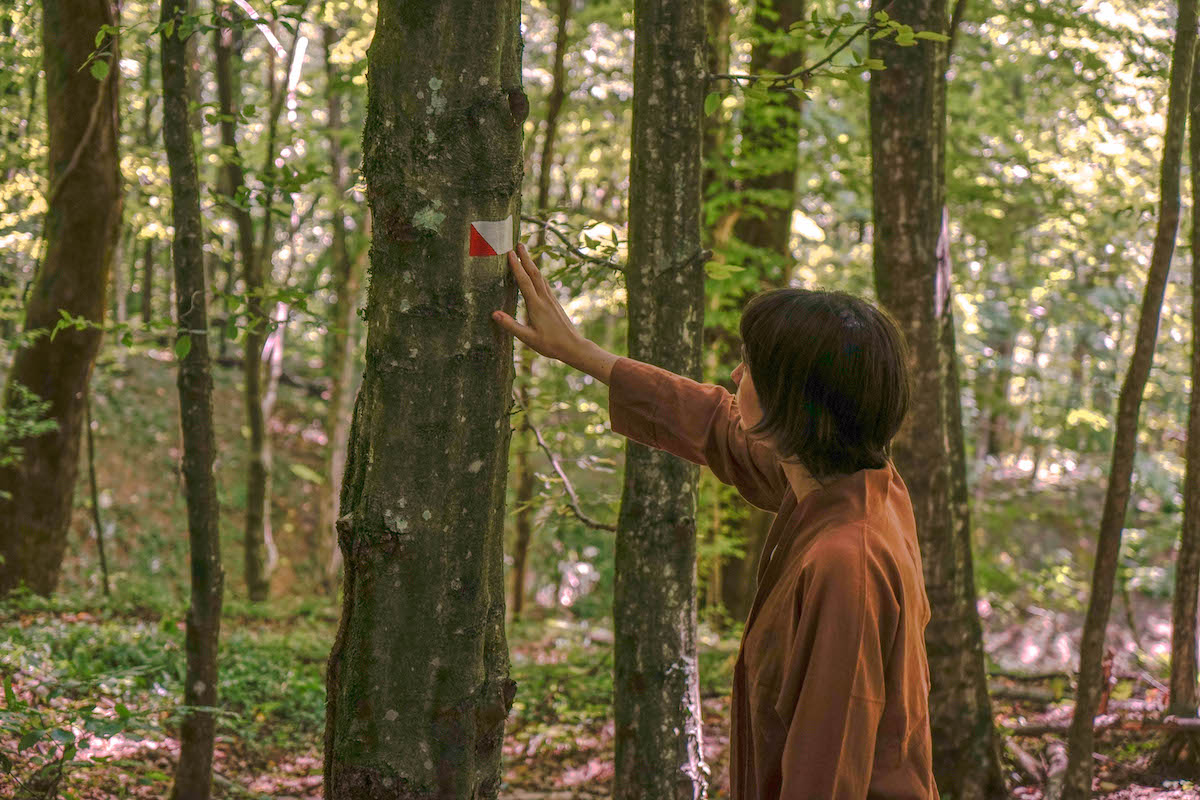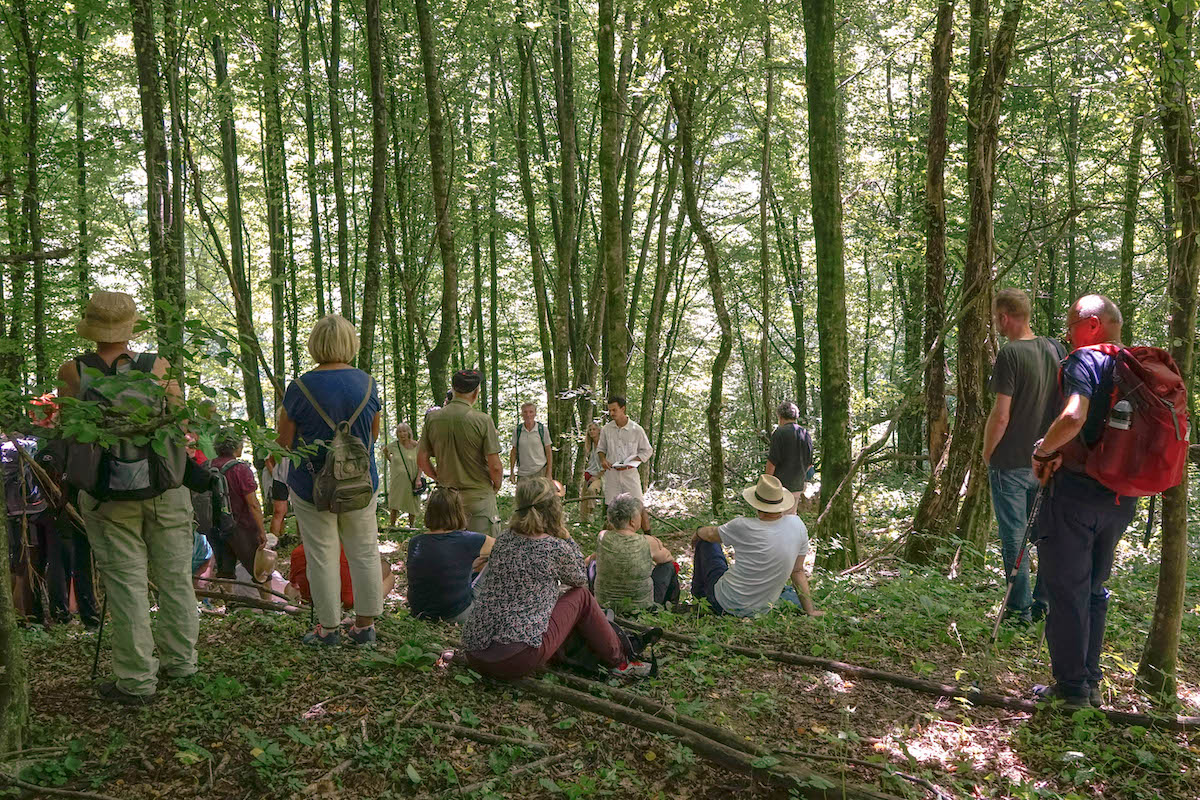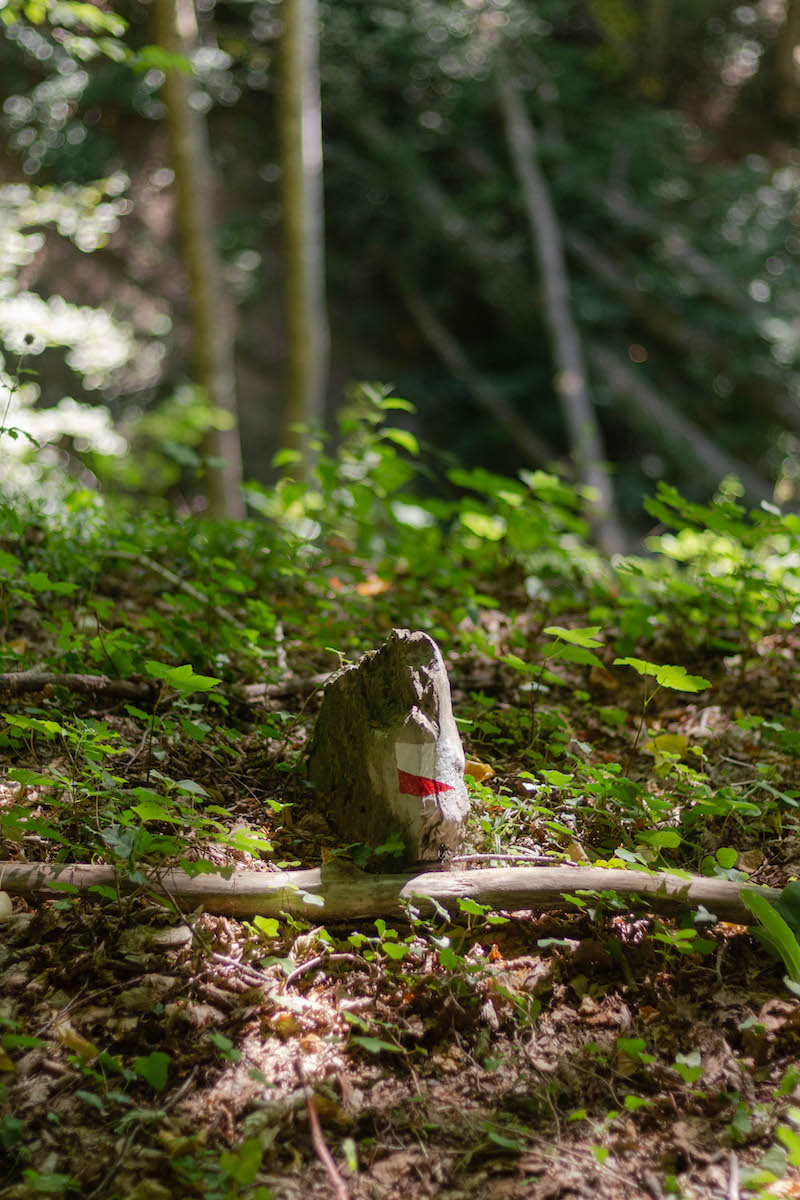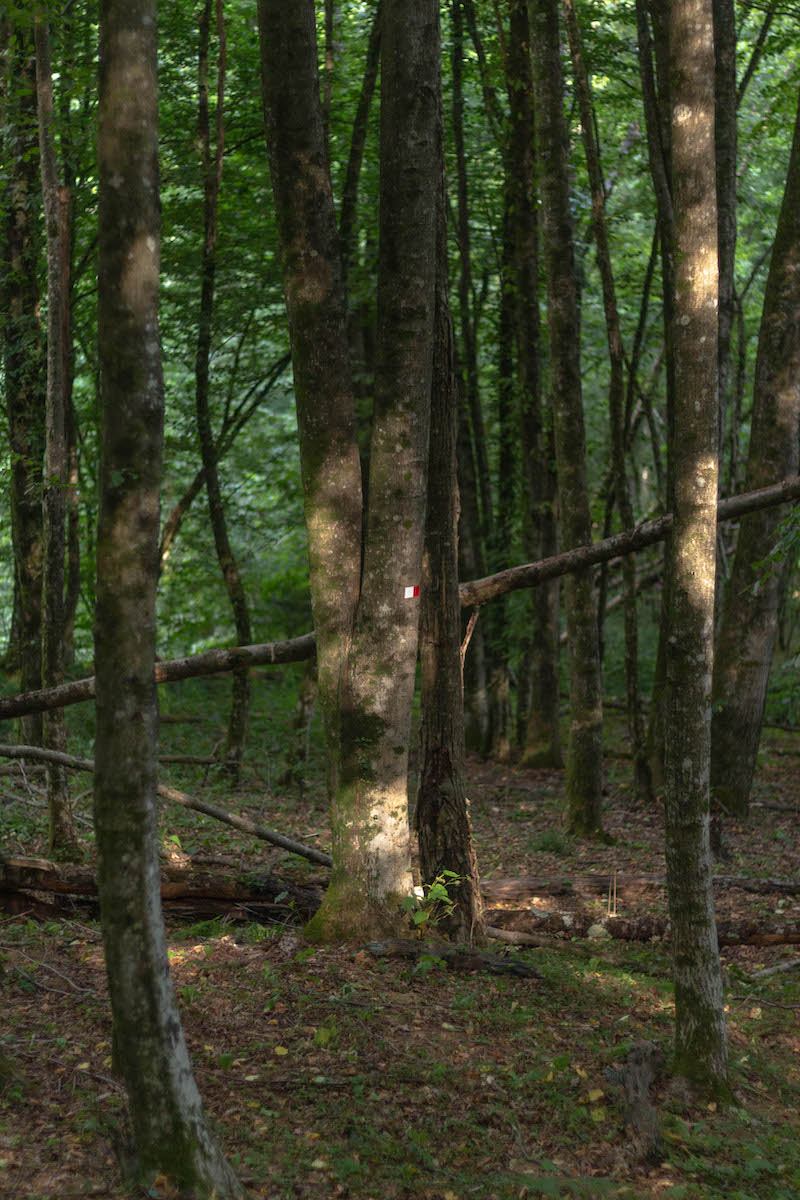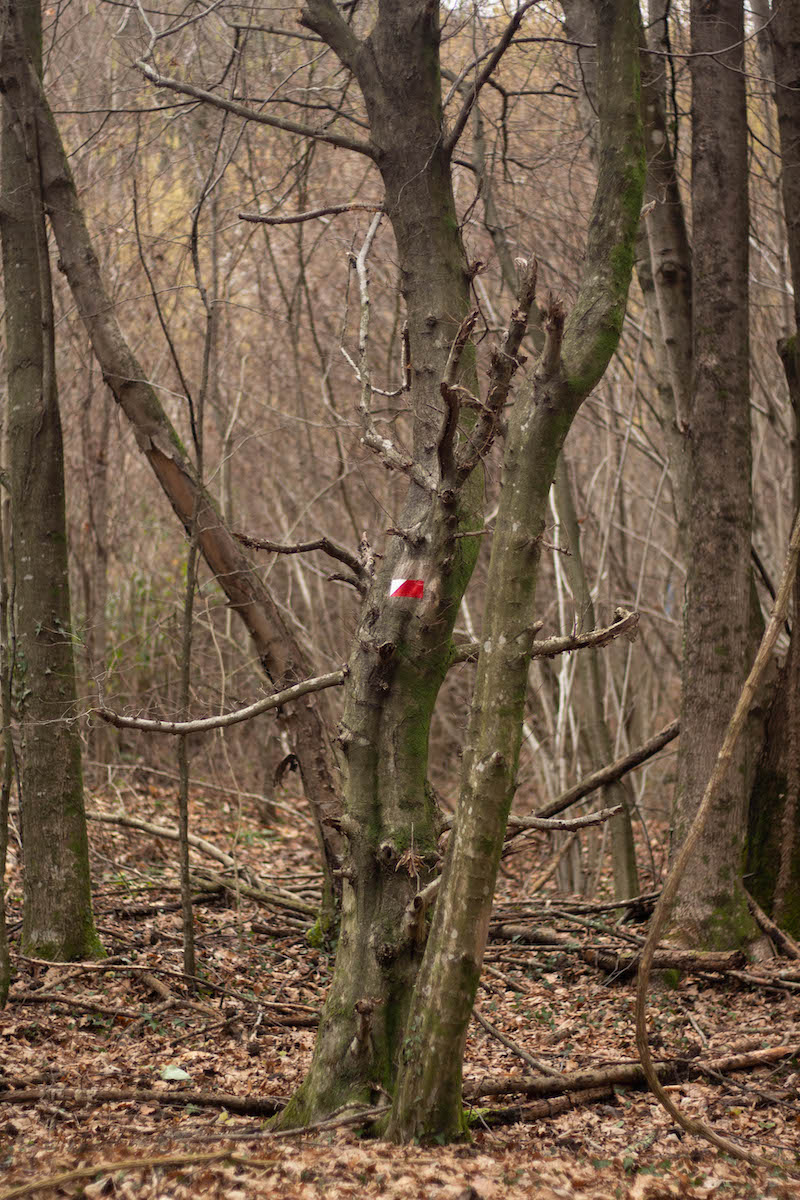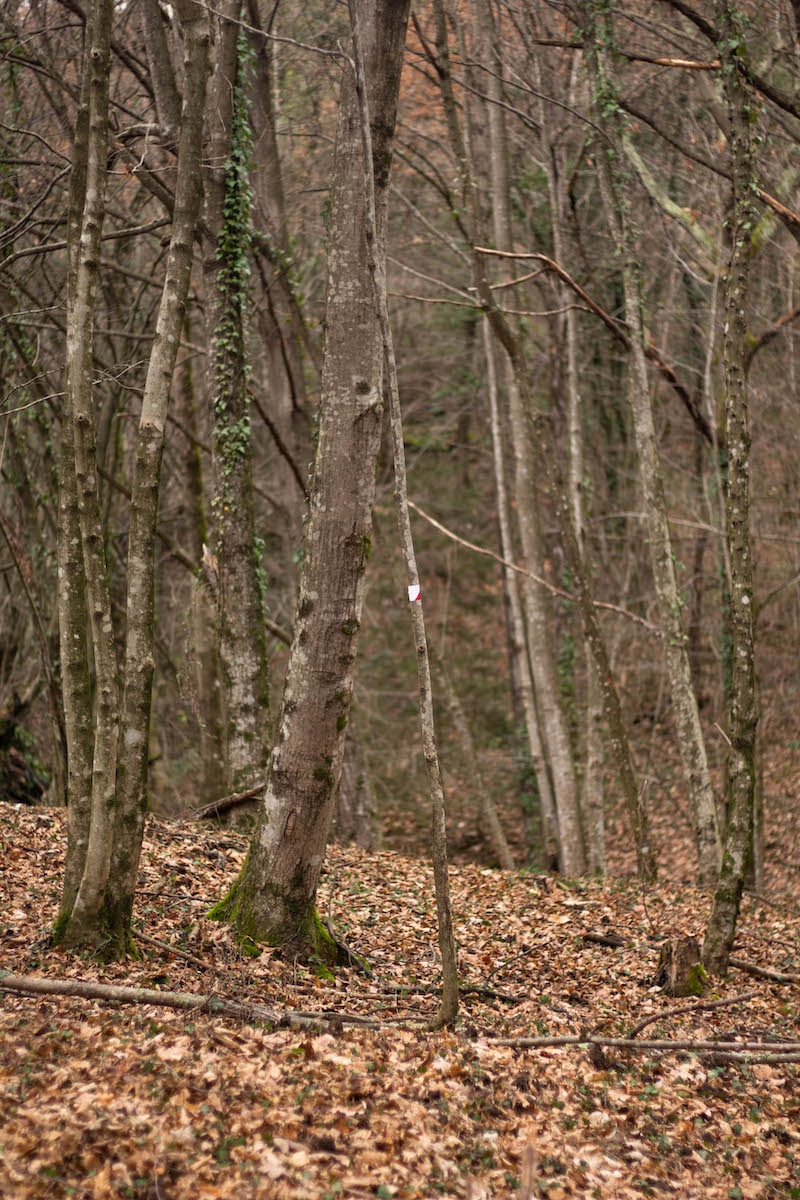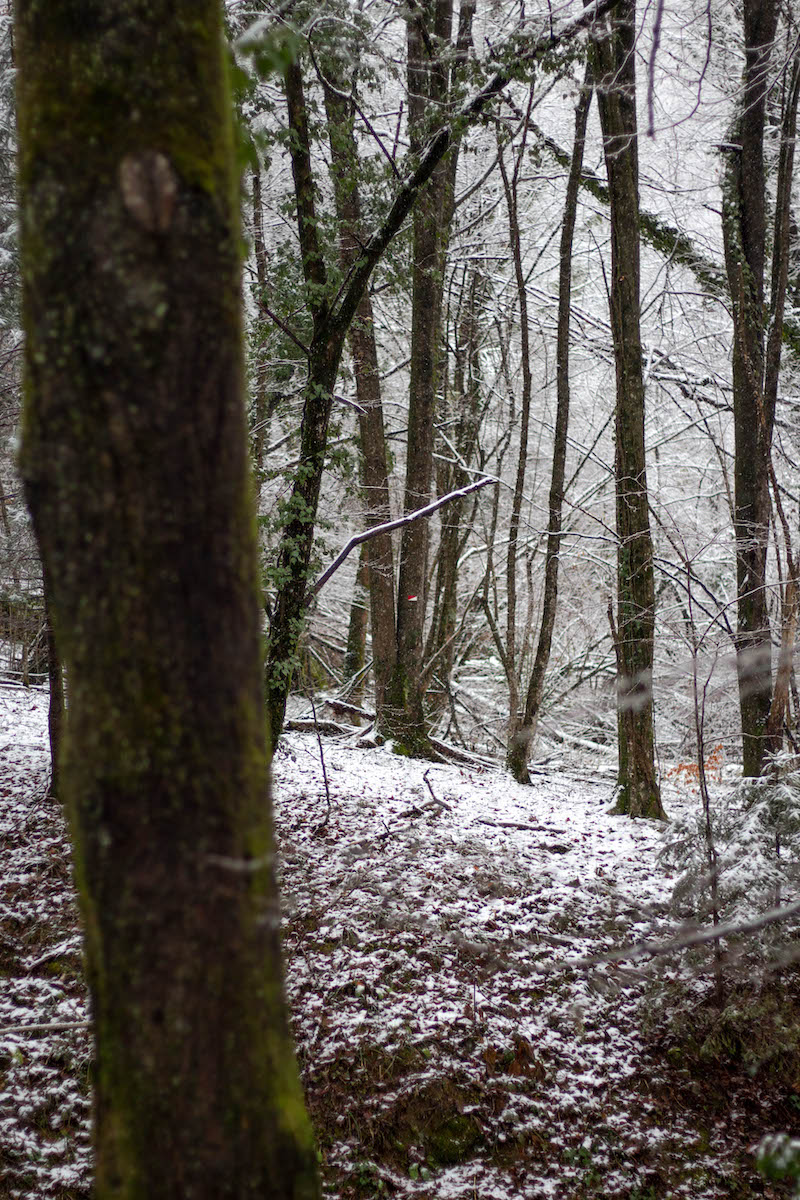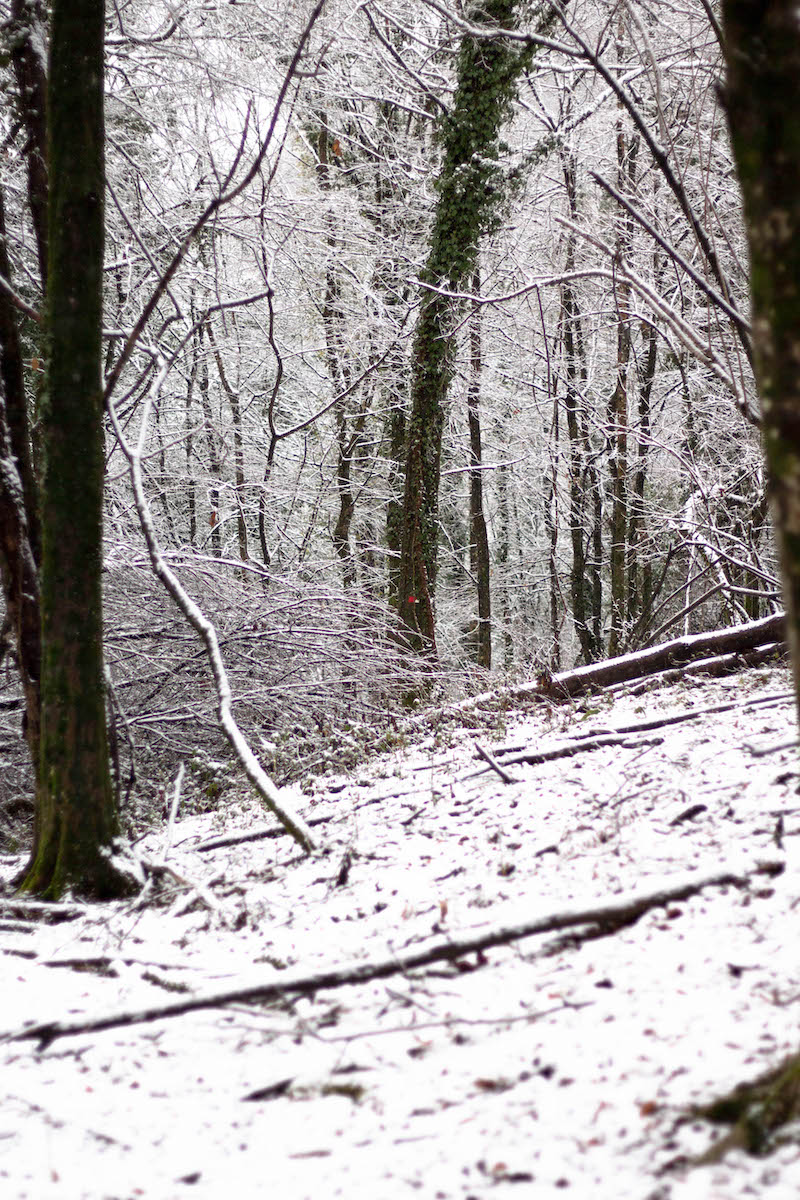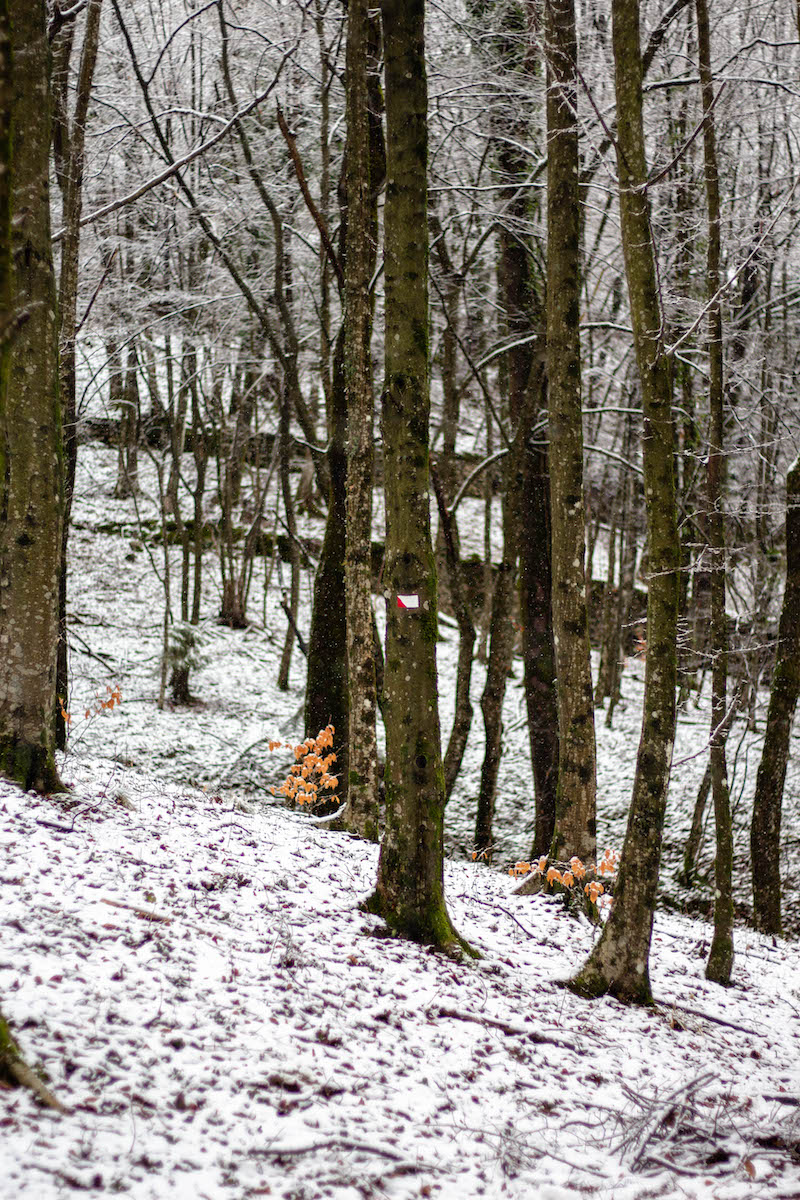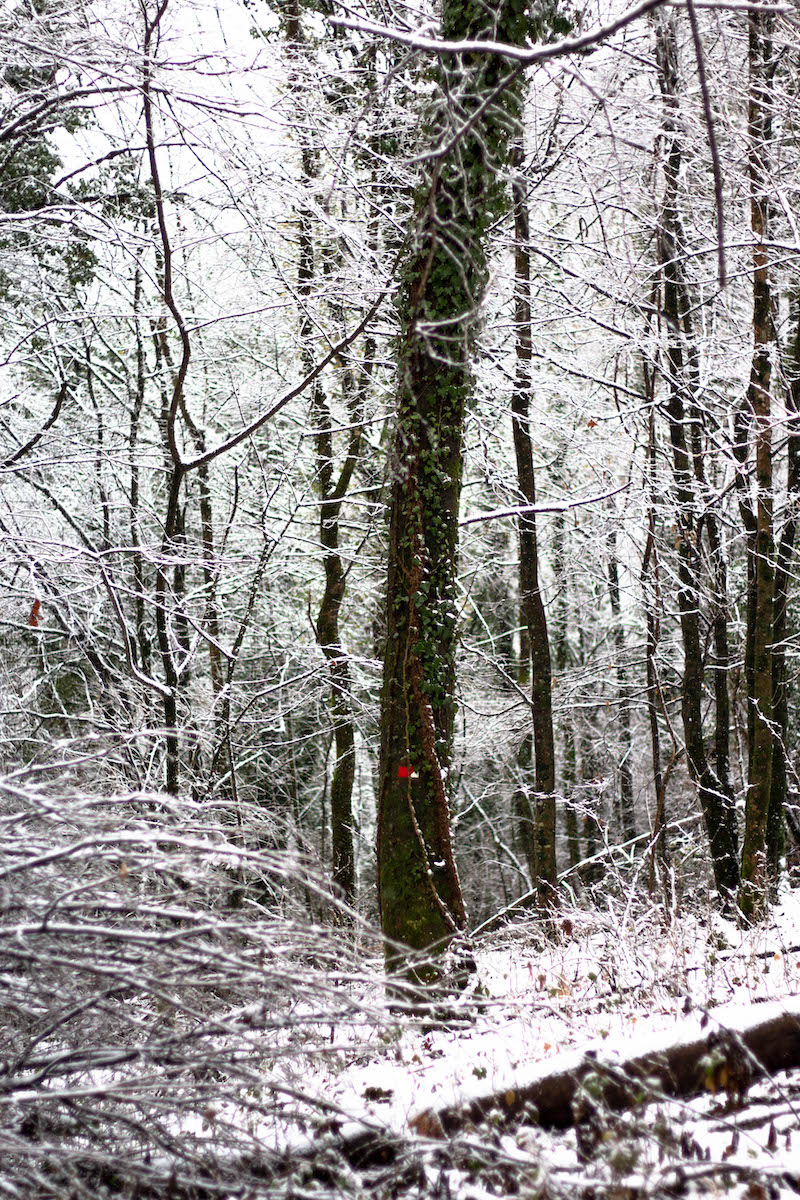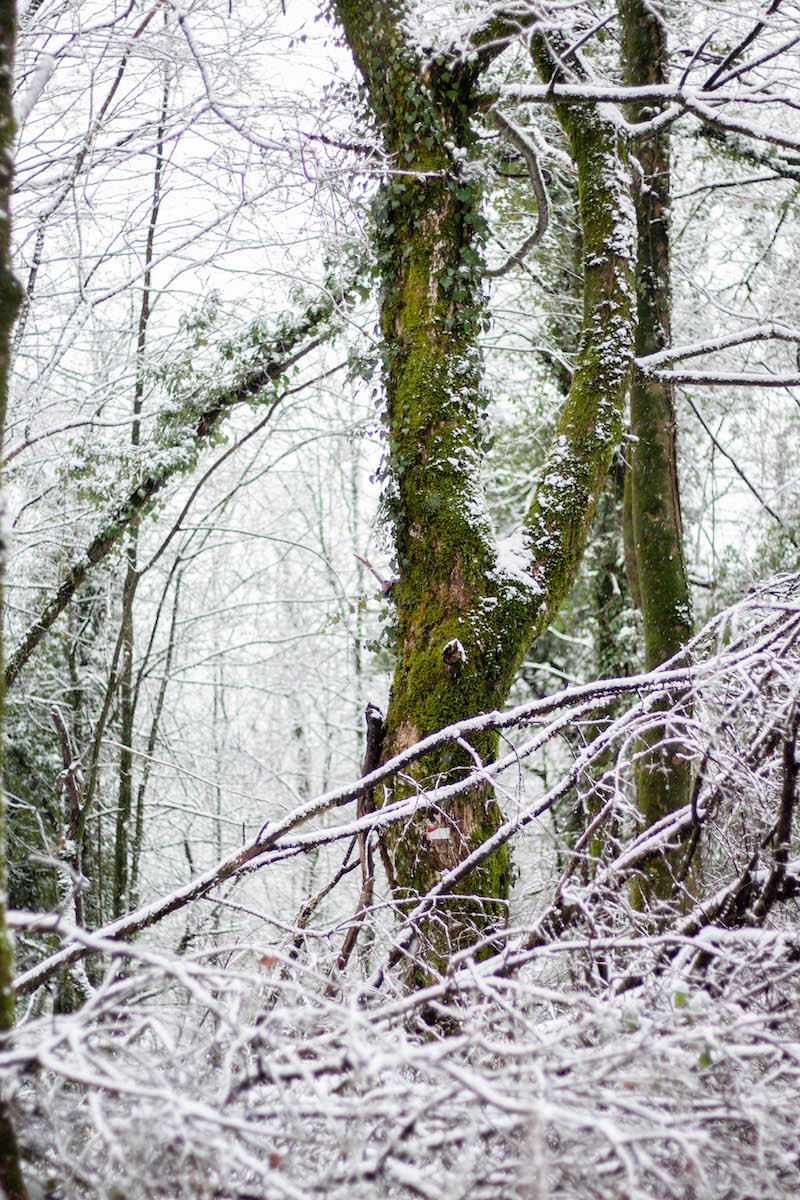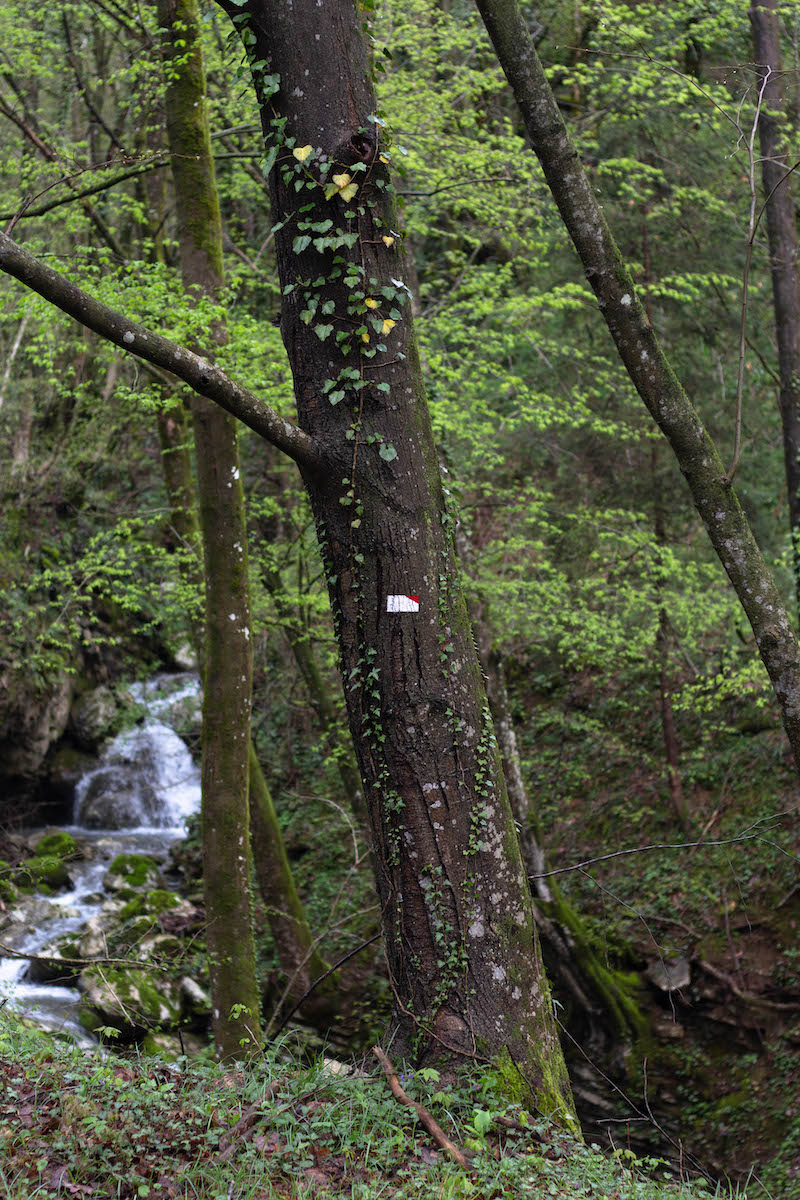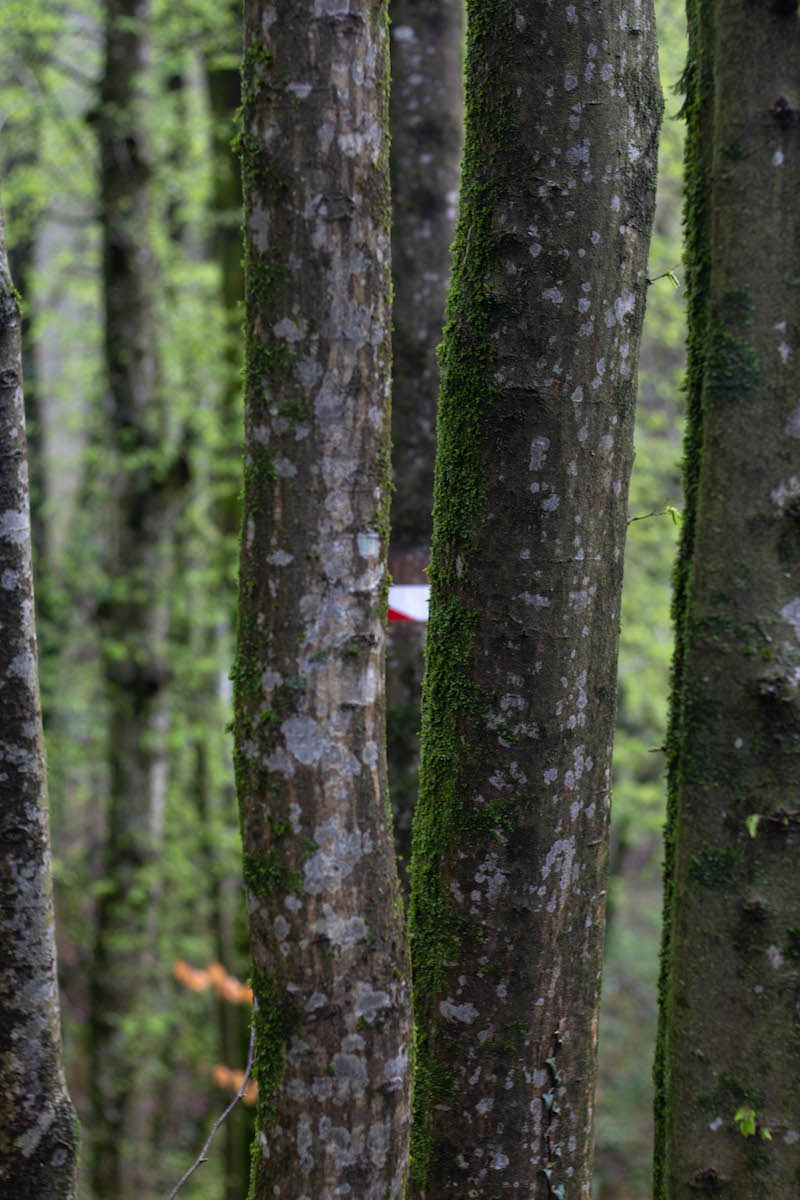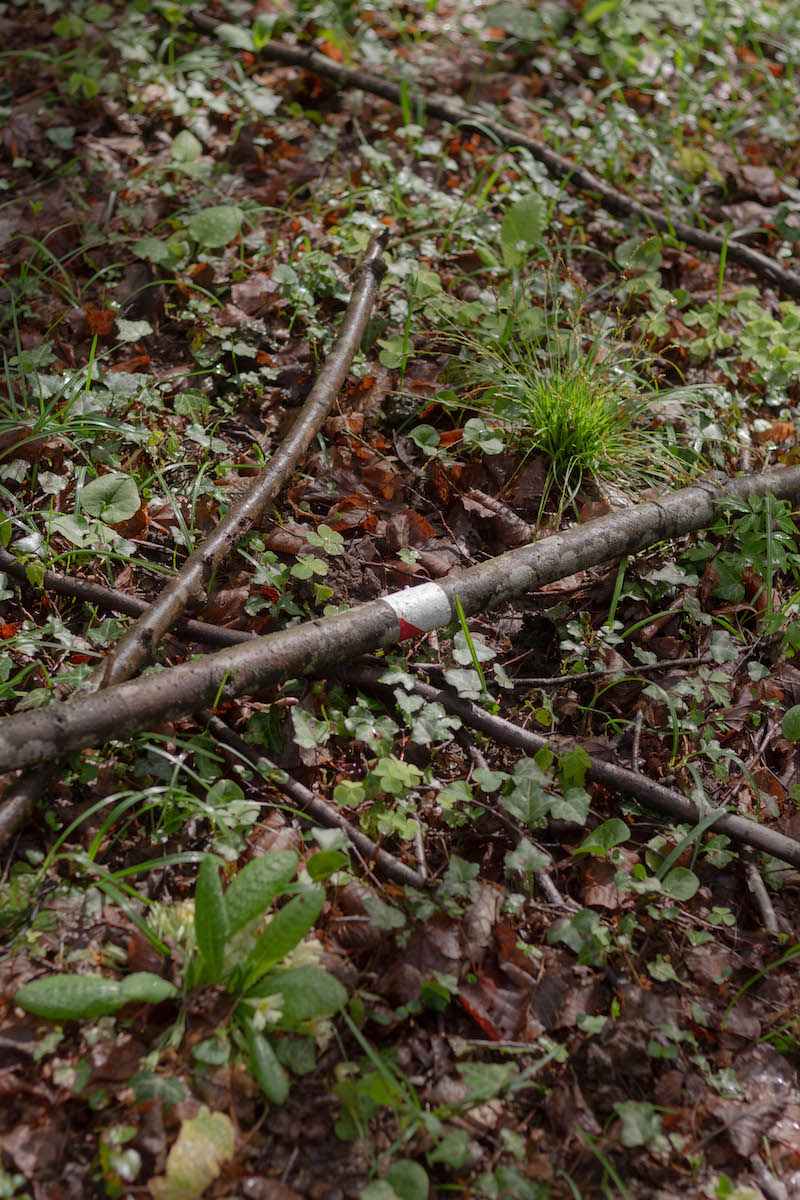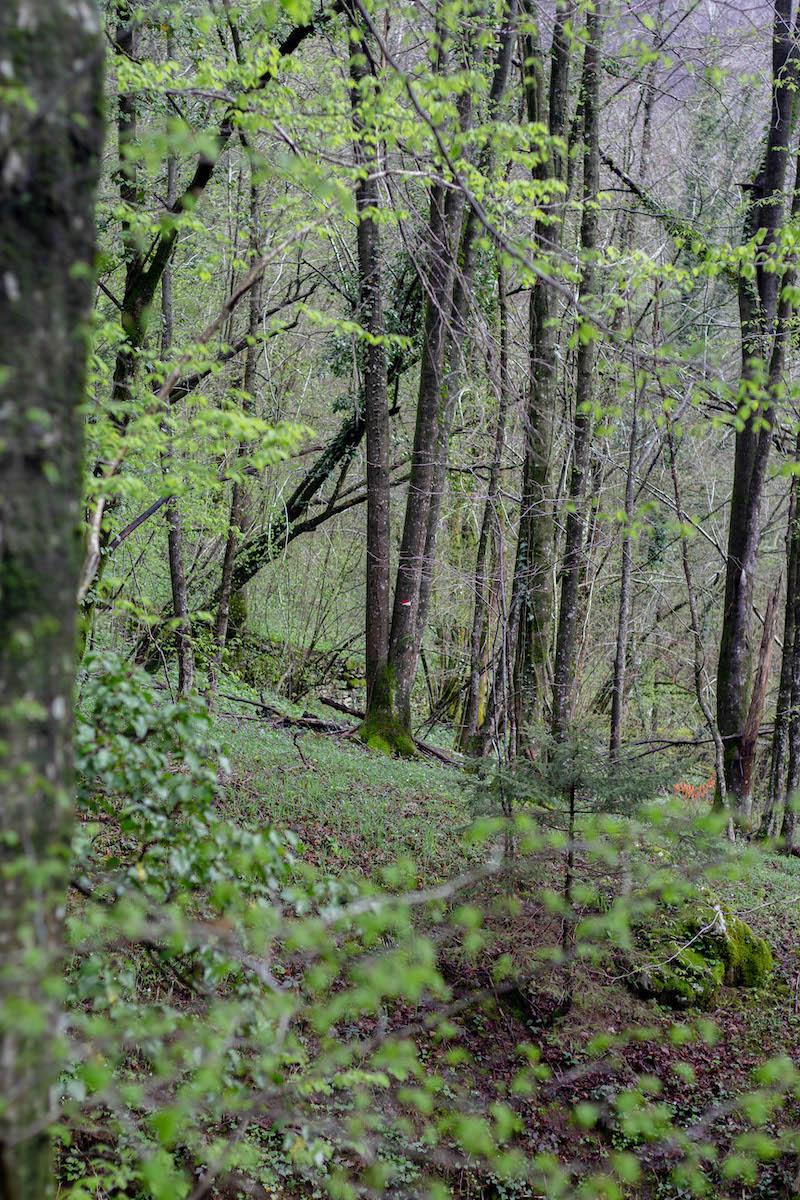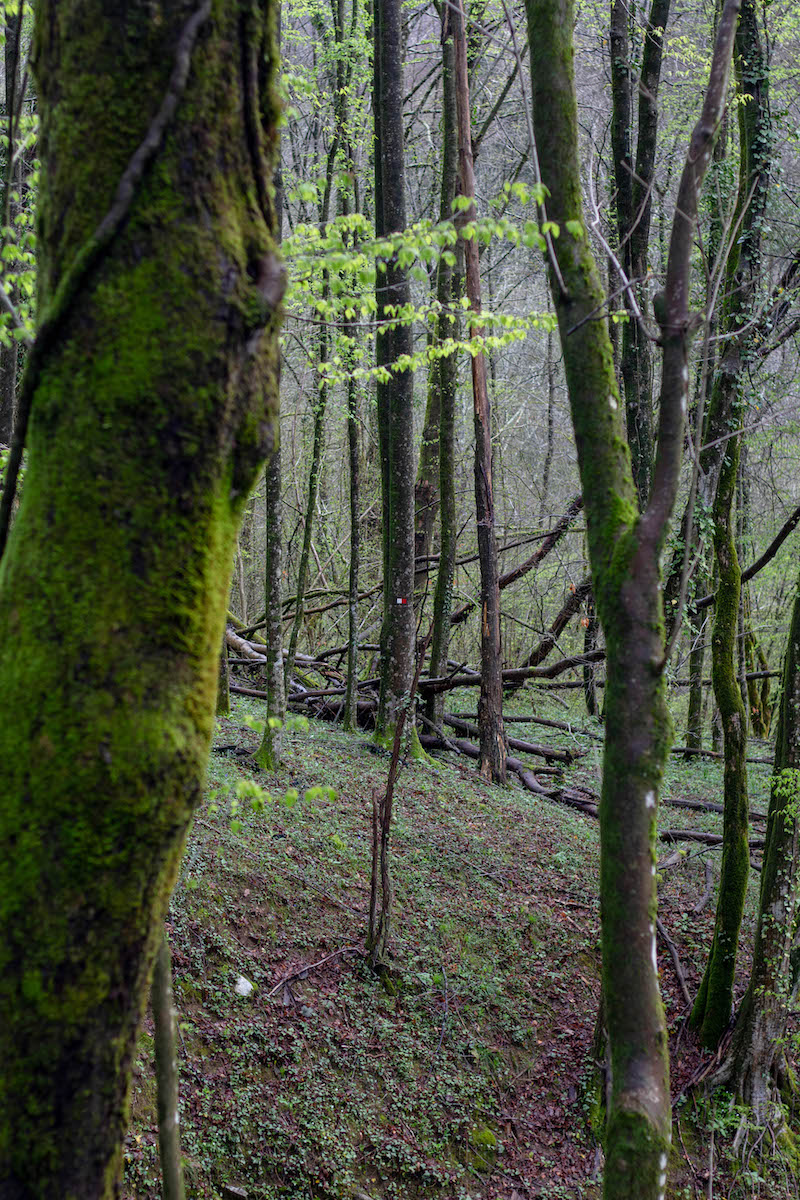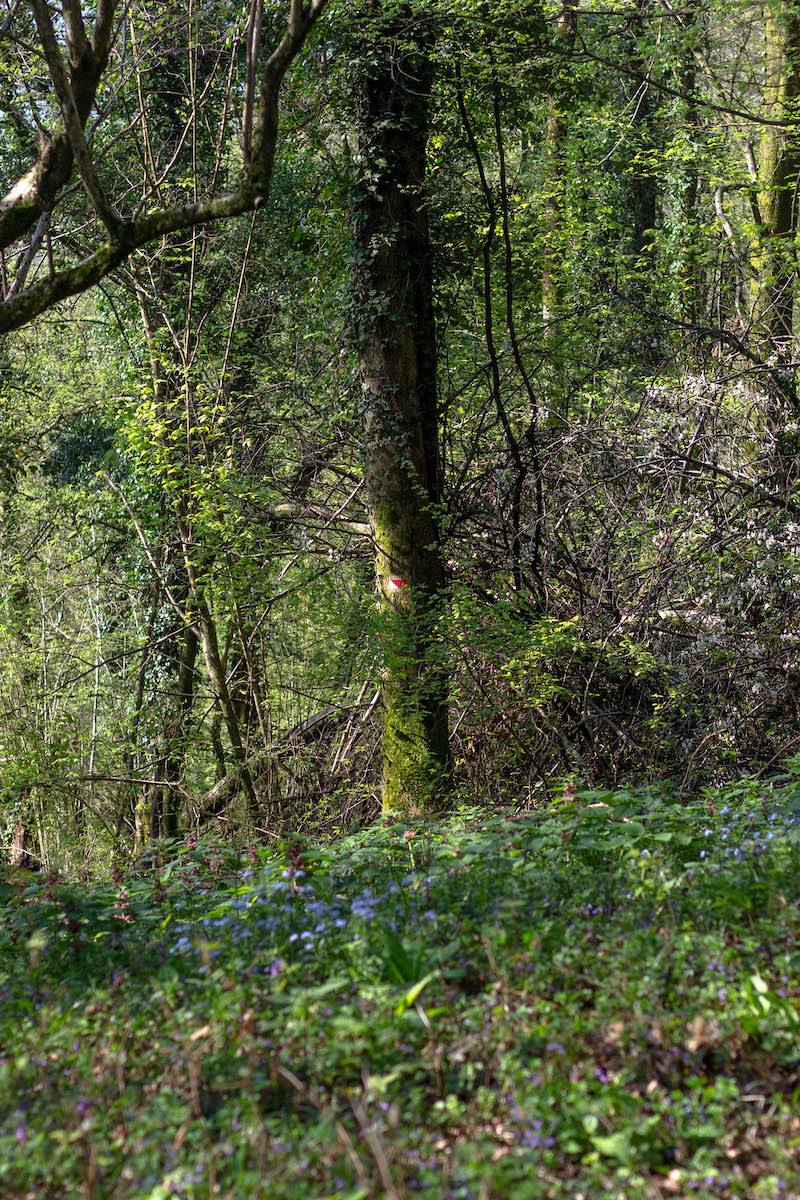Implausible Possible
2022-
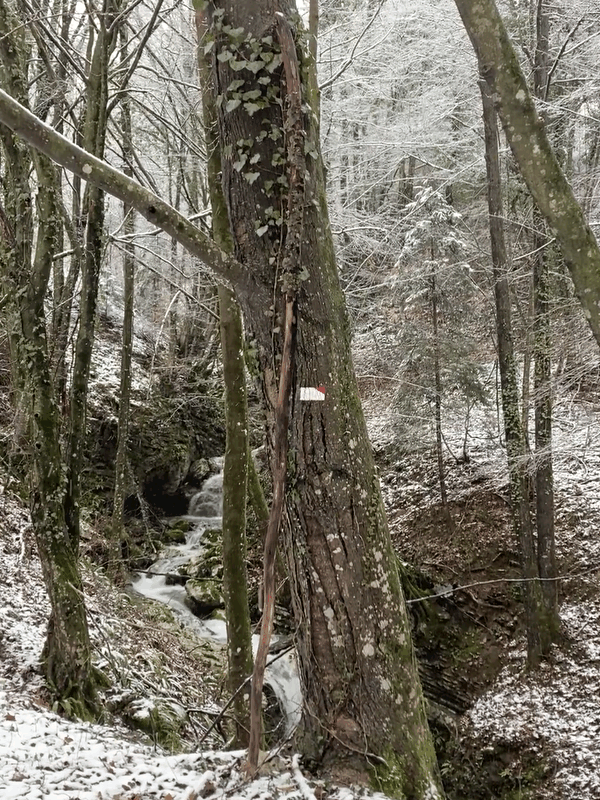
The first installation I made worked as an inquiry into questions of authorship, virtuality and embedded meaning (or the opposite of these things). This minimal intervention derives from signs found in the landscape. The work consists of 28 cryptic patterns painted on chosen trees. No two signs are the same and they all obey simple rules for their composition, which have been abstracted from the geometry of readymade trail markings. Instead of guiding people through a continuous line, these traces face the observer and indiscreetly point to the surrounding landscape. Thus, the work serves to dislocate both the sense of direction and the expectation of meaning of whoever finds it.

IV (What)
Around Topolo, on the trails that cut through the forest, one can find markings that indicate the path. For them to establish visibility, contrast is achieved by the use of two different colors painted at eye height on trees and rocks. These noticeable strokes prevent hikers from getting lost.
In scrutinizing their shape, one can recognize that the existing simplicity relates both to their function and origin: these signs should be distinguishable from the surroundings and convenient to fabricate.
The geometric solution consists of a rectangle that has, as height, twice the size of the brush used, and, as length, double the size of the first measure, in such a way that the end result often approximates the proportion of 1x2. This systematic approach provides for an angular rigor rarely produced by non-human action so the condition of sign is immediately recognizable.
The encounter between isotropic geometry and an irregular, decaying world provides for a myriad of effects that obey different time scales: A tree might crack the paint, whereas a rock might let it be peeled away by weathering. This dynamic is not welcome in an unfamiliar context. The fading away of the color is a troublesome condition for visitors because it means the loss of efficacy for the purpose of path signaling.
III (How)
With the same abstract rules, one can study the possible variations that geometry concedes for dividing a rectangle into two parts with the use of a single line (which starts and ends either at the edge’s midpoint or at one of the corners).
The existence of such variations in the context of trail marking is unlikely, because, although they have an analogous syntax, they disobey the pragmatic principle of convenient technical reproduction. Hence, these constitute an implausible possible.
The proposed intervention consists of painting, within a clear predetermined area, 30 trees and rocks with these cryptic anagrams. Whereas normal signs might indicate something, these equivocal marks dislocate the sense of direction. Because they are composed randomly in the landscape, they cannot point at anything in particular, being merely, purposeless possibilities or insignificant signs.
II (Why)
The vulnerability of these fabricated traces before forest weathering will prove to be identical to the real ones. As such, color will be washed away with the passing of time.
If they mark anything at all, it is their own transient condition.
I (Who)
As such, this piece is dedicated to the last person who finds these traces, whoever they may be, and, before an indecipherable riddle, wonders “why is there something rather than nothing?”
This installation took place in the last edition of Stazione di Topolò/Postaja Topolove (2022) and was curated by Moreno Mireli. The photographic documentation is still ongoing and awaits a suitable editorial opportunity for future publication.
